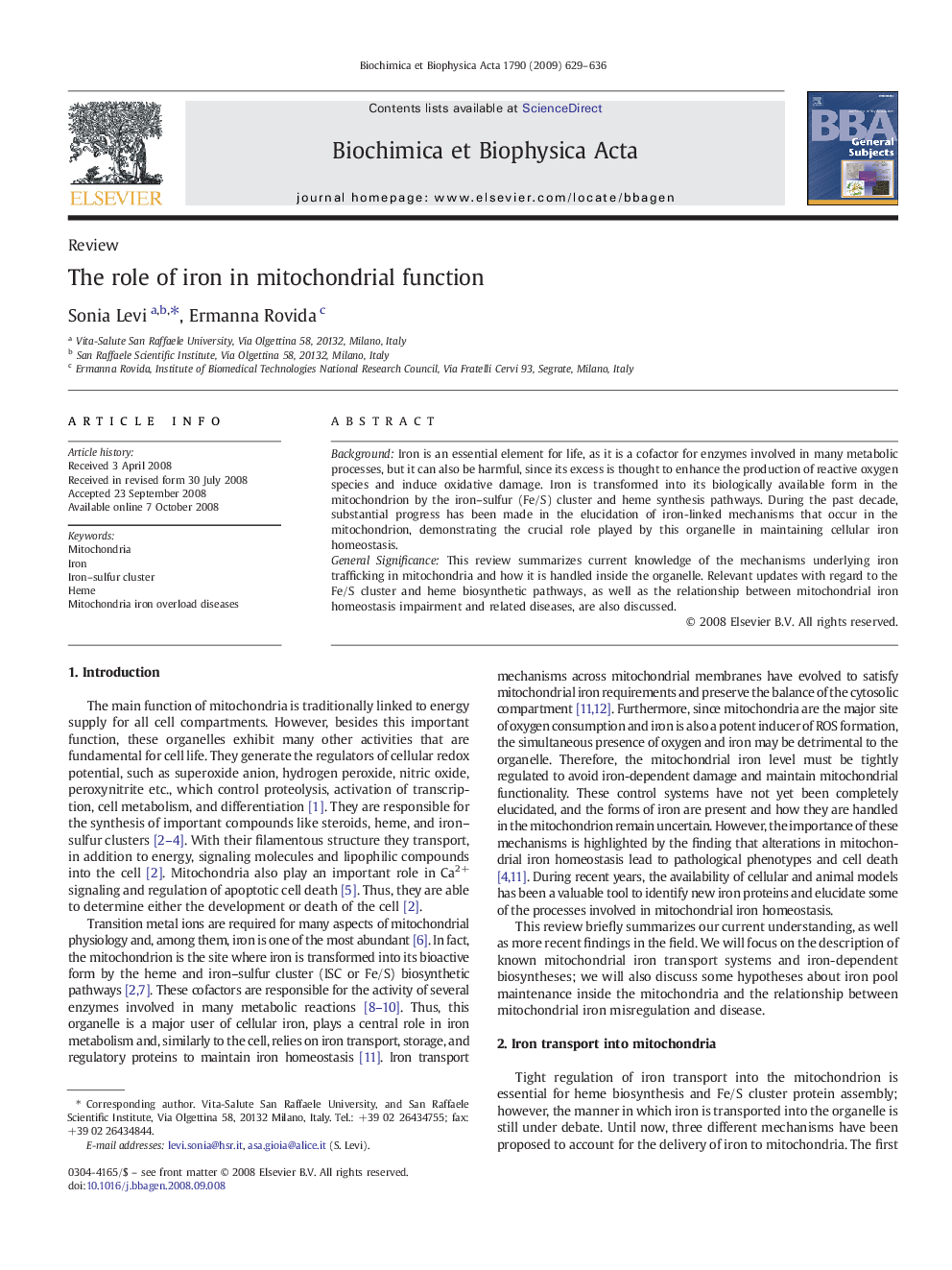| Article ID | Journal | Published Year | Pages | File Type |
|---|---|---|---|---|
| 1948189 | Biochimica et Biophysica Acta (BBA) - General Subjects | 2009 | 8 Pages |
BackgroundIron is an essential element for life, as it is a cofactor for enzymes involved in many metabolic processes, but it can also be harmful, since its excess is thought to enhance the production of reactive oxygen species and induce oxidative damage. Iron is transformed into its biologically available form in the mitochondrion by the iron–sulfur (Fe/S) cluster and heme synthesis pathways. During the past decade, substantial progress has been made in the elucidation of iron-linked mechanisms that occur in the mitochondrion, demonstrating the crucial role played by this organelle in maintaining cellular iron homeostasis.General SignificanceThis review summarizes current knowledge of the mechanisms underlying iron trafficking in mitochondria and how it is handled inside the organelle. Relevant updates with regard to the Fe/S cluster and heme biosynthetic pathways, as well as the relationship between mitochondrial iron homeostasis impairment and related diseases, are also discussed.
